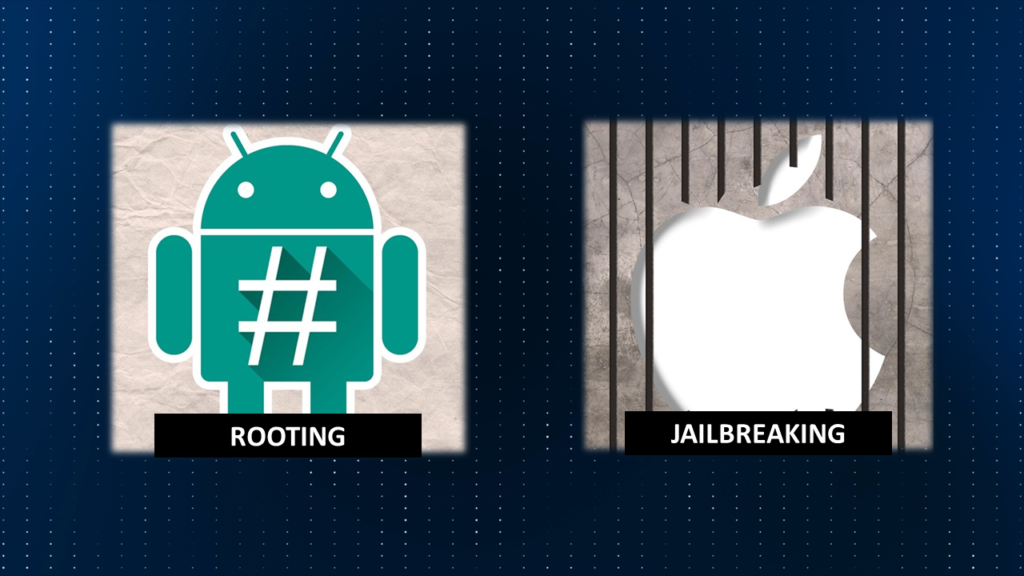Smartphones have become an essential part of our lives, but sometimes they feel restrictive. Maybe you want to customize your phone’s appearance, install apps unavailable in the official app store, or unlock hidden features. This is where terms like jailbreaking, rooting, and cracking come in. But before going ahead, it’s crucial to understand what these terms mean and the potential risks involved.

Breaking Free from Restrictions: Jailbreaking and Rooting
- Jailbreaking (iOS): iPhones come with limitations set by Apple. You can’t install apps outside the App Store or significantly alter the look and feel. Jailbreaking removes these restrictions, allowing you to:
- Install third-party apps unavailable in the App Store, potentially offering more functionality or customization.
- Tweak the user interface to personalize your phone’s appearance.
- Rooting (Android): Similar to jailbreaking, rooting an Android device bypasses restrictions set by Google and the manufacturer. This grants you the ability to:
- Install custom ROMs (modified versions of Android) that offer different features or appearances.
- Remove bloatware (pre-installed apps you don’t use) that can take up storage space.
- Access advanced features normally hidden from regular users.
Important Considerations Before Taking the Plunge
While jailbreaking and rooting offer more control over your device, they come with significant drawbacks:
- Increased Security Risks: Jailbroken or rooted phones are more vulnerable to malware attacks. These modifications can bypass security measures put in place by the manufacturer, making it easier for malicious software to infect your device and steal your data.
- Warranty Voiding: Jailbreaking or rooting typically voids your phone’s warranty. This means if your phone malfunctions after the procedure, the manufacturer won’t be responsible for repairs.
- Potential Instability: Modifications can introduce bugs or crashes into your phone’s operating system, leading to an unreliable user experience.
Cracking: The Unethical Alternative
Cracking refers to illegally modifying software to remove features or restrictions. For instance, cracking might involve bypassing in-app purchases or disabling ads. This is not only unethical, depriving developers of revenue for their work, but it can also be dangerous. Cracked software often lacks proper security measures, increasing the risk of malware infection.
Is Jailbreaking or Rooting Safe?
The straightforward answer is no. Jailbreaking or rooting a device compromises its security, making it a prime target for cybercriminals. By jailbreaking or rooting, you forfeit the device’s security commitment and may no longer receive critical security updates from Apple or Android, leaving the device vulnerable to new security threats.
The Dangers of Installing Unvetted Applications: Consider the risks involved if an installed application contains malicious code. It could potentially harvest personal data, including photos, messages, or credit card details, especially if the device is used for online transactions. Since such applications bypass the stringent security checks of official app stores, their safety cannot be guaranteed.
The Consequences of Compromised Security: Manufacturers often caution against jailbreaking or rooting devices. Viruses often infiltrate devices that have been jailbroken or rooted. If issues arise, the responsibility to rectify them falls on the user, as the warranty is typically voided post-jailbreaking. Engaging in such practices significantly elevates the risk of cyberattacks due to the lack of robust security measures.
Conclusion
While jailbreaking, cracking, or rooting may seem appealing for unlocking additional functionalities, it’s essential to weigh the associated risks carefully. By compromising your device’s security and warranty, you expose yourself to potential data breaches and legal repercussions. Therefore, exercise caution and prioritize the safety and integrity of your mobile devices when considering such modifications.
===================================================================================================================================